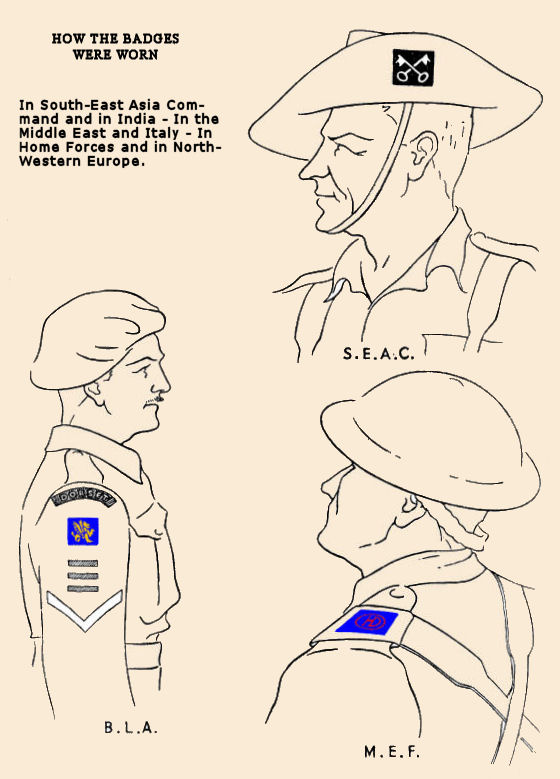
Divisional Signs were reintroduced early in 1940, but instructions were given in 1941 for all formation signs to be referred to as Formation Badges; the official American designation is Shoulder Sleeve Insignia.

Formation badges were worn on the sleeves of uniforms except on greatcoats; in battledress, one inch below the regimental or corps shoulder title, and immediately above the arm of service strip. These were narrow two inch strips, introduced in the autumn of 1940, which gave the soldier's arm of service when wearing a steel helmet, or no cap or other distinguishing badges. Infantry battalions wore one, two, or three red strips one below the other, as in the above illustration, to indicate the brigade to which they belonged as shown here.
In tropical kit areas, such as the Middle East and Far East, the formation badges were often worn affixed to the sleeves of Kahki Drill jackets by means of press studs to facilitate laundering, or even worn stitched onto slip-on epaulettes for wearing on the shoulders of K.D, shirts; this was also the method used in the hot summer months in Italy.
On all vehicles, formation badges were stencilled in colour on the forward and rear mudguards, or on the tailboard of trucks; on jeeps the badge appeared on the body below the windscreen on the driver's side.
Officially all formation badges, and other identifying insignia such as regimental titles, were to be removed before going into battle; however, photographic evidence clearly shows that every degree of obedience to this was to be seen in Normandy, and to some extent in Italy, from completely stripped sleeve and vehicle insignia to total disredard of the order.
Note that the badges reproduced below are as they would appear on the left sleeve of a soldier facing left, or as they would appear on the front of a vehicle.
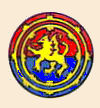 G.H.Q. - Home Forces
G.H.Q. - Home Forces
 Canadian Military Headquarters (CMHQ)
Canadian Military Headquarters (CMHQ)
Established in England in the autumn of 1939 to command and administer, other than operationally, all the Canadian Forces in the UK and the European theatres of operations. The HQ was located in London, in Cockspur Street, by Trafalgar Square.
 G.H.Q. - Middle East
G.H.Q. - Middle East
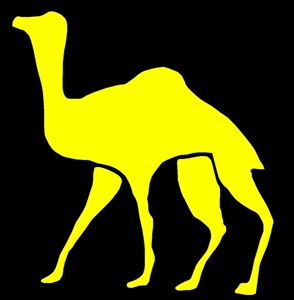 Vehicle stencil.
Vehicle stencil.
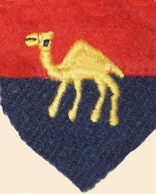 Post WW2.
Post WW2.
A brown or gold camel on a black background. On vehicles yellow paint was used instead of gold. The Areas under command were: Egypt, Palestine & Transjordan, Cyprus, The Sudan, Aden, British Somaliland, Iraq, the Shores of the Persian Gulf, East Africa, Crete, and Greece. In 1946 the background was changed to a red and blue shield.
 General Headquarters - India. The symbol used is the Star of India
General Headquarters - India. The symbol used is the Star of India
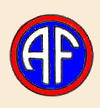 Allied Forces Headquarters (AFHQ).
Allied Forces Headquarters (AFHQ).
Established in Algiers in 1942, this HQ was in command of all American and British formations in Algiers, Morocco, and Tunis, and was composed of mixed U.S. and British staff. After the capture of Sicily AFHQ was moved to Naples. On 11 January 1944 it was redesignated Allied Armies in Italy Headquarters (see badge below).
 Allied Armies in Italy Headquarters
Allied Armies in Italy Headquarters
Symbolises the Torch of Freedom being brought across the Mediterranean. The badge was chosen to commemorate Operation Torch, the code name for the Allied operations which carried the war against the Axis into the Western Mediterranean in November, 1942. This badge was adopted on 11 January 1944 on the disbandment of Allied Forces HQ (see above) in Italy and was initially designated Allied Armies in Italy. It then became the Operational and Administrative Headquarters for all operations in Italy and the Mediterranean Area. Changed on 18 January 1944 to Allied Central Mediterranean Forces, and reverted on 10 March 1944 to the title Allied Armies in Italy. It was located at Caserta.
 Supreme Headquarters Allied Expeditionary Force (SHAEF) North Western Europe.
Supreme Headquarters Allied Expeditionary Force (SHAEF) North Western Europe.
Worn by both American and British forces, by all ranks, but on the left sleeve only. The official description of this badge was given as: The shield-shaped cloth patch, with a black background, representing the darkness of Nazi oppression, bears the crusader's sword of liberation, with the red flames of avenging justice leaping from its hilt. Above the sword is a rainbow, emblamatic of hope, containing the colours of which the Allied flags are composed. The heraldic field of blue above the rainbow is emblematic of peace and tranquility for the enslaved peoples of Europe - the objective of the United Nations.
 Allied Land Forces - South East Asia Command (ALFSEAC)
Allied Land Forces - South East Asia Command (ALFSEAC)
In fact, it was never issued to American Forces.
 Supreme Allied Command South East Asia (SACSEA)
Supreme Allied Command South East Asia (SACSEA)
A phoenix arising from the flames, embematic of Allied might rising from the ashes of the Japanese-occupied territories of Burma, Malaya, China, the East Indies, and South Pacific.
 Northern Command (UK)
Northern Command (UK)
 Eastern Command (UK).
Eastern Command (UK).
The defiant bulldog. Eastern Command's wartime HQ was at Luton, it's territory covered East Anglia and the Central Midland Counties.
 Scottish Command (UK).
Scottish Command (UK).
The heraldic Lion of Scotland woven in gold. Red and black are the colours of a Command HQ brassard. HQ Scottish Command was at Edinburgh. Units of the Command other than HQ staff had the same badge but with a plain red background.
 South-Eastern Command (UK)
South-Eastern Command (UK)
This Command came into existence during WW2, and was formed for operational and administrative purposes from the Aldershot Command and that portion of the Eastern Command which lay south of the Thames. Their Headquarters was at Reigate. South-Eastern Command ceased to exist at the end of 1944.
 Western Command (UK)
Western Command (UK)
The yellow Cross of St David of Wales, with the Red Rose of Lancaster superimposed on the centre of the cross. Western Command had its Headquarters at Chester, and its boundaries embraced the whole of Wales and the bordering North-Western and North-Midland Counties.
 Southern Command (UK)
Southern Command (UK)
A conventional representation of the Southern Cross, red and black being the colours of a Command HQ. The colouring of the shield varied according to the arm of service of the unit of the wearer. In the case of Command Headquarters, the colouring was red and black horizontal bars of a Command H.Q. pennant and brassard. There were seventeen other variations of this Command's badge, according to Regimental or Corps colours of the different arms of service. For all eighteen click here.
 Anti-Aircraft Command
Anti-Aircraft Command
Originally this formation badge was worn only by the staff of General Sir Frederick Pile's HQ, but in 1943 it was universally adopted for use by all formations and units of Air Defence of Great Britain (ADGB) including the Home Guard batteries, and the use of separate badges as previously worn by the UK Anti-Aircraft Corps and Divisions was discontinued.
 India Command
India Command
 Eastern India Command
Eastern India Command
The design stressed the horse's mane, from the commander's name: General Sir Mosley Mayne.
 Central Command (India)
Central Command (India)
 Ceylon Army Command
Ceylon Army Command
 Persia and Iraq CommandCommand
Persia and Iraq CommandCommand
Generally known by the abbreviation PAIF or Paiforce, or PAIC, this force comprised the Tenth Army and its bases and L of C, extending over Persia (modern Iran) and Iraq, and those which expelled the Axis agents from Persia.
 Malta Command
Malta Command
A Maltese Cross on the colours of a Command.
 West Africa Command
West Africa Command
This Command covered the west African Colonies: Nigeria, Gold Coast,Gambia, and Sierra Leone.
 East Africa Command
East Africa Command
This Command covered Kenya, Tanganyika, British Somaliland, Abyssinia, and Italian Somaliland.
 Malaya Command
Malaya Command
This Command was re-established after the liberation of Malaya.
 H.Q. 11th Army Group
H.Q. 11th Army Group
This badge was only used as a vehicle marking. 11th Army Group was formed in Dehli, in October 1943, it later became HQ Allied Land Forces, South East Asia. An advance HQ was set up in Dehli whilst Main HQ moved to Barrackpore and it was there that it was redesignated ALFSEA.
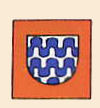 H.Q. 15th Army Group
H.Q. 15th Army Group
It commanded the 8th British and 7th U.S. Armies. 8 + 7 = 15! Worn by British and American H.Q, troops. 15th Army Group was formed on 11 July 1943 for the invasion of Sicily, then on to the invasion of Italy. On 11 January 1944 redesignated Allied Armies in Italy, changed on 18 January 1944 to Allied Central Mediterranean Forces, and reverted on 10 March 1944 to the title Allied Armies in Italy.
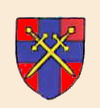 H.Q. 21st Army Group
H.Q. 21st Army Group
Formed in the UK on 9 July 1943 to command the 2nd British Army and 1st Canadian Army for the invasion of NW Europe. 2 + 1 gives 21!
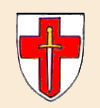 1st Army
1st Army
The crusader's shield and sword. 1st Army H.Q. was formed in London, on 24 June 1942, for the Allied Torch landings in North Africa. Advanced Headquarters landed in Algeria on 22 November 1942, it subsequently went on to French Morocco and Tunisia, under the overall command of General Eisenhower's GHQ. Additional details.
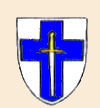 2nd Army
2nd Army
The crusader's shield and sword, but with a blue cross. Second Army was formed in June 1943. It took part in the Normandy Landings and the Northwest European campaign under General Eisenhower's SHAEF. Additional details.
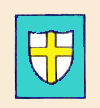 8th Army
8th Army
Formed within Middle East Command (MEC) in September 1941. It took part in operations in North Africa, Sicily, and mainland Italy. Additional details.
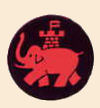 9th Army
9th Army
The Ninth Army was formed in the Levant, at the rear of the Eighth Army. It was initially commanded by General Sir Harry M. Wilson who was nicknamed 'Jumbo', hence the elephant. The badge, on the disablement of HQ Ninth Army, was subsequently adopted by North Levant District.
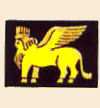 10th Army
10th Army
The Tenth Army was formed in Iraq in 1941, hence the Assyrian lion. Tenth and Ninth Armies were formed within MEC but only ever had a few divisions, both Armies were never engaged in combat as formations but instead were used to reinforce Eighth Army.
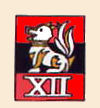 12th Army
12th Army
Formed in Burma under ALFSEA on 28 May 1945 to command British troops fighting in Burma, hence the Burmese dragon.
 14th Army
14th Army
Formed in India in October 1943, under GHQ Dehli, fought in Burma util withdrawn for the invasion of Malaya and replaced in Burma by Twelfth Army. The design of the 14th Army badge was submitted anonymously in a competition open to all ranks for the choice of badge - when it was chosen, it was discovered that the artist was none other than the Army Commander, General Sir William Slim. Additional details.
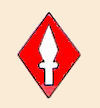 1st Corps H.Q.
1st Corps H.Q.
The spearhead was adopted because it was the first Corps of the army. Additional details.
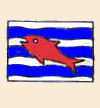 2nd Corps H.Q.
2nd Corps H.Q.
The sign, a brook with a leaping fish, was chosen after the name of II Corps' first commander, Lieutenant-General (as he then was) Sir Alan Brooke. Additional details.
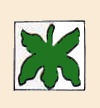 3rd Corps H.Q.
3rd Corps H.Q.
The fig leaf was chosen after the name of the Corps' first commander, Lieutenant-General Sir Ronald Adam. Additional details.
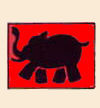 4th Corps H.Q.
4th Corps H.Q.
Represented by the four legs of a charging elephant.
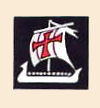 5th Corps H.Q.
5th Corps H.Q.
5th Corps took part in the Norwegian expedition of 1940, hence the Viking ship. Additional details.
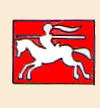 8th Corps H.Q.
8th Corps H.Q.
The charging knight of 8th Corps was adopted in February 1943 because it was formed of two armoured divisions. Additional details.
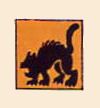
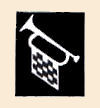 9th Corps H.Q.
9th Corps H.Q.
There were two flashes, the Black Cat in connection with it's nine lives, and the white trumpet with nine white squares on its banner. Additional details.
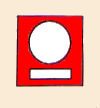 10th Corps H.Q. The symbol is a 10 on its side. Additional details.
10th Corps H.Q. The symbol is a 10 on its side. Additional details.
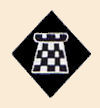 11th Corps H.Q.
11th Corps H.Q.
The badge represents a Martello tower, the 74 towers built during the Napoleonic wars against a possible French invasion. The badge was chosen as symbolic of the number of pill-boxes and strong points constructed by the Corps along the East Coast whilst fulfilling its anti-invasion role in 1940/1941. The Corps formed part of the Home Forces and did not serve overseas.
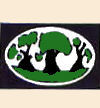 12th Corps H.Q.
12th Corps H.Q.
The oak, ash, and thorn in an oval was chosen as a link with the name of its commander, Major-General Sir A.F.A.N. Thorne and with the Oak, the Ash and the Thorn in Puck of Poock's Hill by Rudyard Kipling, the Corps having being raised in Pook's Hill country. Additional details.
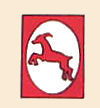 13th Corps H.Q.
13th Corps H.Q.
The red gazelle was adopted in the Western Desert. Additional details.
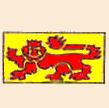 25th Corps H.Q.
25th Corps H.Q.
The red lion on a yellow background was formerly the badge of H.Q. British Troops in Cyprus. Additional details.
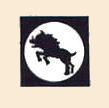 30th Corps H.Q.
30th Corps H.Q.
The wild boar sign was known affectionately as the Pig to members of 30th Corps. Additional details.
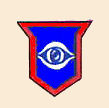 Guards Armoured Division
Guards Armoured Division
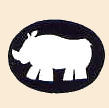
 1st Armoured Division
1st Armoured Division
The second flash was adopted by 1st Armoured Division in Italy in 1944. The first flash was retained by 2nd Armoured Brigade until the end of the war. A regular division at the outbreak of the war, formerly The Mobile Division, on 5 April 1943 it was redesignated 1st British Armoured Division to distinguish it from the 1st US Armoured Division. It ceased to be operational on 28 October 1944 and from this date there were no formations in the division. Divisional HQ was disbanded on 11 January 1945. Additional details.
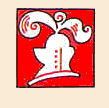 2nd Armoured Division
2nd Armoured Division
Divisional HQ was created in the UK on 15 December 1939, it was captured in Lybia, along with most of the division, by German forces on 8 April 1941. The remnant of the division was disbanded in Egypt on 10 May 1941.
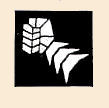 6th Armoured Division
6th Armoured Division
History and Order of Battle of the division.
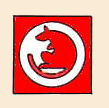

 7th Armoured Division
7th Armoured Division
The best known of all armoured divisions, The Desert Rats. It was formed in Egypt in 1938 as a Mobile Division. In December 1939 it became known as the 7th Armoured Division and its commander, Major-General O'Moore Creagh, adopted the jerboa (the desert rat) divisional sign. It was changed to the upright red jerboa, picked out in white on a black background, when the division was in Northwest Europe in 1944. The third design and colour change dates from 1945. Commanding Officers and formations .
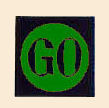 8th Armoured Division
8th Armoured Division
The green disc represents a traffic light set at Go, the Divisional motto being No stop; No caution; Go on. This division was sent to the Middle East but was split up on arrival, so instead of going it went. Commanders and formations .
 9th Armoured Division
9th Armoured Division
The 9th was formed in 1941 as a training division until it was disbanded in 1944. The panda was jocularly chosen, as it is a nonaggressive bear, to reflect the division's role as a training formation.
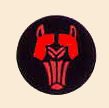 10th Armoured Division
10th Armoured Division
The fox's mask was a reference to hunting, as the division was originally formed of mechanised cavalry and yeomanry units. It was formed on 31 October 1939 as 1st Cavalry Division and redesignated on 1 August 1941 as 10th Armoured Division.
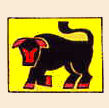 11th Armoured Division
11th Armoured Division
Known as the Black Bull. History and formations . Additional details.
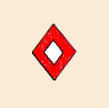 42nd Armoured Division
42nd Armoured Division
This division was formed by the conversion to armour of the 42nd (East Lancashire) Infantry Division on 1 November 1941. However, it did not see active service and was disbanded 17 October 1943. It's engineers became part of the 79th Division.
 79th Armoured Division
79th Armoured Division
This was a specialist armoured division known as 'the funnies'. It was commanded by Major-General Sir Percy C.S. Hobbart who dedicated his life to the assertion that tanks were the backbone of a modern army. He was the creator of the 7th Armoured Division, but the 76th Division was his masterpiece. It was disbanded at the end of the war. Additional details.
 1st Infantry Division
1st Infantry Division
 2nd Infantry Division
2nd Infantry Division
2nd Div's emblem was chosen in 1940 by its commander, Major-General H.C. Lloyd, who had previously commanded a Guards Brigade which had a single key for its badge. The crossed keys are the emblem of the Archbishop of York. Additional details.
 3rd Infantry Division Additional details.
3rd Infantry Division Additional details.
 4th Infantry Division
4th Infantry Division
A quarter being a fourth. Initially the flash was just the fourth quadrant, but later became the full circle showing the quadrant detached. Additional details.
 5th Infantry Division
5th Infantry Division
Y for Yorkshire, to denote this regular division's pre-war association with Northern Command. Northern Command's HQ was at York. Additional details.
 6th Infantry Division
6th Infantry Division
Formed in Egypt on 3 November 1939 by redesignation of 7th Infantry Division it was renumbered the 70th during the Tobruk siege, and as such it was sent to India. By 1700 hrs on 22 October 1941 6th Div HQ had assumed command of all forces in the Fortress from 9 Australian Division. Divisional Headquarters ceased to function on 25 October 1943 and was finally disbanded by 24 November 1943. On 6 September 1943 the Division commenced reorganising for the role of Long Range Penetration and on 25 October 1943 handed over its Formations and Units to Special Force. Additional details.
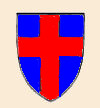 8th Infantry Division
8th Infantry Division
A pre-war regular division on Palestine Internal Security duries, but was disbanded there on 28 February 1940. Additional details.
 9th (Scottish) Infantry Division
9th (Scottish) Infantry Division
The Scottish Thistle, emblem of Scotland. The 9th was amalgamated with the 51st Infantry Division in 1940, after the debacle in France. Additional details.
 12th (Eastern) Infantry Division
12th (Eastern) Infantry Division
The 12th was disbanded after Dunkirk. Additional details.
 15th (Scottish) Infantry Division
15th (Scottish) Infantry Division
The red lion rampant on a yellow field is from the Royal Coat of Arms of Scotland. Additional details.
 18th Infantry Division
18th Infantry Division
18 Div's sign represented a windmill, in association with East Anglia where it was raised. It was unfortunately sent to Singapore just before the Japanese invasion. Additional details.
 23rd (Northumbrian) Infantry Division
23rd (Northumbrian) Infantry Division
The flash could be found with either a blue or a green background. This division was disbanded after Dunkirk. Additional details.
 36th Infantry Division
36th Infantry Division
The emblems of its two brigades, the 29th and the 72nd, were linked together. 36th Div fought against the Japanese. Additional details.
 38th (Welsh) Infantry Division
38th (Welsh) Infantry Division
The yellow Cross of St David, because it was made up of Welsh Territorial units, a second-line division, it remained in the Home Forces throughout the war. Additional details.
 40th Infantry Division
40th Infantry Division
The evolution of this sign is interesting. The Division was formed in Sicily in 1943. In WW1 the sign showed a bantam cock, but to commemorate the Battle of Bourlon Wood an acorn and an oak on a white diamond was superimposed. Then in WW2 this was simplified to the acorn, the white diamond lain on its side - and all done to bluff the enemy. Additional details.
 42nd (East Lancashire) Infantry Division
42nd (East Lancashire) Infantry Division
This division was converted to armour in November 1941 and became the 42nd Armoured Division. Additional details.
 43rd (Wessex) Infantry Division
43rd (Wessex) Infantry Division
The division adopted the arms of the ancient Kings of Wessex. Additional details.
 44th (Home Counties) Infantry Division Additional details.
44th (Home Counties) Infantry Division Additional details.
 45th Infantry Division
45th Infantry Division
Drake's Drum, the drum once owned by Sir Francis Drake. It was with him when he circumnavigated the world and when he died off Panama in 1596. It was chosen because the division was a duplicate of 43rd (Wessex) Infantry Division and its association with South Wessex. Additional details.
 46th Infantry Division
46th Infantry Division
The tree represents a Sherwood Forrest oak, chosen for this Territorial Army Division because it was composed of Territorials of the north-midland counties Additional details.
 47th (London) Infantry Division
47th (London) Infantry Division
The bow and the bells, Bow Bells, get it?. This was originally the 2nd London Division, it was reorganised as the 47th Division on 21 November 1940. On 1 September 1944 it was reformed as 47th Infantry (Reserve) Division.
 48th (South Midland) Infantry Division
48th (South Midland) Infantry Division
The badge shows the division's famous macaw. When it's commander first entered divisional H.Q. at Littlecote, a macaw kept there shouted 'Good luck, good luck!'.
 49th (West Riding) Infantry Division
49th (West Riding) Infantry Division
Thge 49th initially wore its WW1 sign, the white rose of Yorkshire. In 1940 it was sent to Norway and then to Iceland where it adopted the polar bear. At first the bear had a bowed head but this was later raised to make it more aggressive. Additional details.
 50th (Northumberland) Infantry Division
50th (Northumberland) Infantry Division
The badge was designed by Colonel J. M. Grant, D.S.O., O.B.E. who was a staff captain at the Divisional H.Q. 1938-39, it was two capital 'Ts' (for the Tyne and Tees) in red on a black square. When looked at sideways the two 'Ts' formed a capital 'H', so that the initial letters of the three main rivers which flowed through the Divisional area - the Tyne, the Tees, and the Humber - were represented.
At the beginning of the war it was a first line Territorial Army Division, composed of Territorials recruited from Northumberland and Durham, organized as a Motor Division. In June 1940 it was reorganized as an Infantry Division and on 16 December 1944 it was reorganized as an Infantry (Reserve) Division in the UK. On the 1 August 1945 Divisional Headquarters ceased to command its formations and units, moved to Norway by 25 August, and assumed the title Headquarters British Land Forces Norway.
 51st (Highland) Infantry Division
51st (Highland) Infantry Division
The 51st wore the Divisional sign of the Highland Division of the 1914-18 war. Additional details.
 52nd (Lowland) Infantry Division
52nd (Lowland) Infantry Division
The formation sign was a St Andrew's Cross on a shield and, as it was trained for mountain warfare, the word 'Mountain' on a scroll beneath the shield. Additional details.
 53rd (Welsh) Infantry Division
53rd (Welsh) Infantry Division
On uniforms the sign had a khaki background, on Divisional transport the W was on a green background, Additional details.
 54th (East Anglian) Infantry Division
54th (East Anglian) Infantry Division
The letters JP were chosen from the initials of the division's first commander, Major-General J.H.T. Priestman. Its independent 162nd Brigade also wore the JP flash. Additional details.


 55th (West Lancashire) Infantry Division
55th (West Lancashire) Infantry Division
There is interesting symbolism here: the Red Rose of Lancashire with a double set of five leaves representing the double five of 55. The Divisional vehicle marking did not include the stem and the leaves, and was confined to the Lancashire rose, but again here too the five motif was repeated. Two examples of vehicle markings are shown above. At the beginning of the war 55th Division was a First Line Territorial Infantry Division. In January 1942 it was placed on lower establishment. On 14 December Divisional HQ was redesignated HQ Lines of Communication (64th Division) and the division ceased to exist. Throughout that period it was in the UK.
 56th (London) Infantry Division
56th (London) Infantry Division
Dick Whittington's cat, for London. In 1939 this was the 1st London Division organised as a motor formation. It was reorganised as an infantry division in June 1940 and on 18 November 1940 was redesignated as 56th (London) Division. Additional details.
 59th (Staffordshire) Infantry Division
59th (Staffordshire) Infantry Division
The badge shows pithead machinery against a slag heap symbolising the proud mining tradition of Staffordshire. In September 1939 this formation was a Second Line Territorial Army Division, duplicate of 55th Infantry Division. In June 1940 it was organised as an Infantry Division, but on 19 October 1944 Divisional HQ was placed in suspended animation. Additional details.

 61st Infantry Division
61st Infantry Division
The second simplified style was for vehicle marking. Commanders and formations .
 66th Infantry Division
66th Infantry Division
A second line TA division in September 1939, it was disbanded on 23 June 1940 having never moved from the UK. Between 3 September and 27 September, 1939 the units of this division were moved into the 42nd Infantry Division. Additional details.
 76th Infantry Division.
76th Infantry Division.
The badge was a traditional Norfolk wherry in full sail, linking the division's association with East Anglia.
Commanders and component units.
 77th Infantry Division.
77th Infantry Division.
Composed mainly of battalions of west county regiments, the badge depicts King Arthur's sword, Excalibur, held aloft above the water.
Commander and component units.
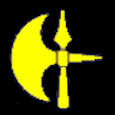
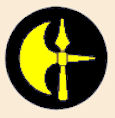 78th Infantry Division
78th Infantry Division
Both these variants were used. Not issued in matched facing forward pairs, the axe blade always faced left, thus appearing in opposite directions on the left and right sides of the shoulder or sleeve. The 78th was a war-formed division raised in Scotland in preparation for the North African Expedition, and landed with 'Blade Force', hence the axe blade, at Algiers on 8 November 1942.
Commanders and component units.
 80th Infantry (Reserve) Division
80th Infantry (Reserve) Division
Divisional Headquarters formed in the UK on 1 January 1943, disbanded on 1 September 1944.
 1st and 6th Airborne Divisions, same insignia.
1st and 6th Airborne Divisions, same insignia.
The winged Pegasus.
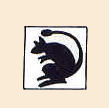 4th Armoured Brigade
4th Armoured Brigade
4th and 7th Armoured Brigades, together with a support group, originally formed the 7th Armoured Division, and thus bore variations of the division's jerboa. History of the brigade .
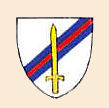 6th Armoured Brigade
6th Armoured Brigade
6th Armoured Brigade was formed on 15 September 1941 from the 30th Infantry Brigade in the United Kingdom . On 15 January 1943 it was renamed the 6th Guards Tank Brigade and finally named the 6th Guards Brigade on 17 June 1945. The brigade served in North West Europe from 2 February to 16 June 1945.
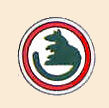 7th Armoured Brigade
7th Armoured Brigade
History of the brigade .

 8th Armoured Brigade
8th Armoured Brigade
The fox's mask originates from the formation badge of 10th Armoured Div. The more stylised version on the left was used on vehicles. History of the brigade .
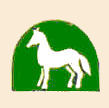 9th Armoured Brigade
9th Armoured Brigade
The horse was chosen because this brigade was formed by cavalry and yeomen units. The 9th Armoured Brigade was formed from the redesignation of the 4th Cavalry Brigade, a 1st Line Yeomanry (horse riding) brigade in the Territorial Army. It was converted to an armoured role on 3 August 1941 in the Middle East, and joined 10th Armoured Division.
The Brigade was nominally independent, but was placed under command of 2nd New Zealand Division for El Alamein. After the battle the Brigade was reduced to a handful of running tanks and was withdrawn to Syria to regroup and undertake internal security duties. In 1944 the Brigade fought in Italy in support of 78th Infantry Division, and the 4th and 10th Indian Divisions.
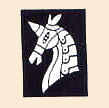 20th Armoured Brigade
20th Armoured Brigade
History of the brigade .
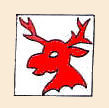 22nd Armoured Brigade
22nd Armoured Brigade
History of the brigade .
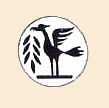 23rd Armoured Brigade
23rd Armoured Brigade
The 23rd was raised in Liverpool on 1 November 1940 by redesignation of the 23rd Army Tank Brigade, hence the Liver Bird. This flash could also be square.
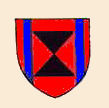 25th Armoured Engineer Brigade
25th Armoured Engineer Brigade
Formed in Italy on 5 January 1945 as 'B' Assault Brigade RAC/RE. Brigade HQ was formed by redesignation and reorganization of Headquarters 25th Tank Brigade.
 27th Armoured Brigade
27th Armoured Brigade
From a photograph of a banner bearing this badge this appears to be the correct orientation as worn on the left sleeve facing left, or as seen on the front of a vehicle, the seahorse faces to the right. This Brigade was formed in the UK on 26 November 1940 by redesignation of 1st Armoured Reconnaissance Brigade. 27th Armoured Brigade H.Q. was disbanded in NW Europe on 30 July 1944.
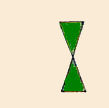 31st Armoured Brigade
31st Armoured Brigade
Formed in NW Europe on 2 February 1945 by redesignation of 31st Tank Brigade.
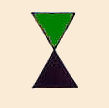 33rd Armoured Brigade
33rd Armoured Brigade
Formed in the UK on 17 March 1944 by redesignation of 33rd Tank Brigade. Brigade HQ was disbanded in NW Europe on 22 August 1945.
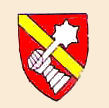 34th Armoured Brigade
34th Armoured Brigade
Formed in NW Europe by redesignation of 34th Tank Brigade.
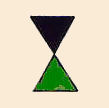 35th Armoured Brigade
35th Armoured Brigade
Formed in the UK on 14 July 1945 by redesignation of 35th tank Brigade.
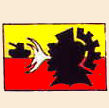 1st Armoured Replacement Group C.M.F., they supplied and refitted all armoured units of the 8th Army in Italy. The flash shows the head of Mars on a background of R.A.C. colours: red and yellow.
1st Armoured Replacement Group C.M.F., they supplied and refitted all armoured units of the 8th Army in Italy. The flash shows the head of Mars on a background of R.A.C. colours: red and yellow.
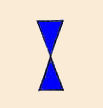

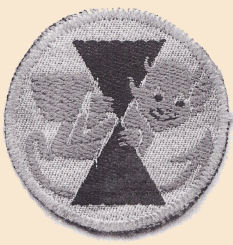 21st Tank Brigade
21st Tank Brigade
The second badge was adopted in Italy in mid-summer 1944. In Peter Gudgin’s book With Churchills To War (previously published as Tanks for the Memory) he recounts the story as to how 21st Tank Brigade acquired the formation badge. According to Gudgin (48th RTR) the new badge (Army tank diabolo in blue with a red gremlin on a yellow circle) was designed by Captain Tom Gorringe of `A’ Squadron 48th RTR. Peter Gudgin records that the motivation for the new design was the incoming brigade commander, Brigadier D. Dawnay, who wanted the badge to show that the brigade was under new management following its reorganisation. The gremlin motif was inspired by a notable training exercise of that name. Captain Maurice Ladd had the new flashes made up by a silk factory near Caserta from the original Gorridge drawing.
This formation at the beginning of the war was a First Line Territorial Army Tank Brigade embodied in the UK. On 6 June 1942 it was redesignated 21st Tank Brigade and on 11 June 1945 it became 21st Armoured Brigade.
N.B. Both Howard N. Cole (Formation Badges 1939-45) and Guido Rosignoli (World Army Badges & Insignia) list this badge as that of 16th Armoured Brigade. Cole adds This Brigade served in North Africa and Italy. However this was not the case, HQ 16th Armoured Brigade was formed for a few weeks only in the UK and disbanded before units were allocated to it and the Brigade was never raised nor was a formation badge allocated to it. I am grateful to Mr Thomas Canning, who served in 21st Tank Brigade, for drawing my attention to this, and to another veteran, Mr Arthur Gerald Chester, for further corrections.
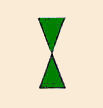 23rd Army Tank Brigade
23rd Army Tank Brigade
This Brigade was redesignated 23rd Armoured Brigade on 1 November 1940, see Liver Bird badge above in (Armoured Brigades section)
 24th Army Tank Brigade
24th Army Tank Brigade
This Brigade was reorganised and redesignated 24th Armoured Brigade on 1 November 1940. On 30 August 1942 it was redesignated 24th Armoured Brigade Group, but ceased to be that on 15 December 1942 and disbanded on 1 March 1943 in the Middle East. It was reformed on 23 August 1943 as a new 24th Armoured Brigade (Dummy Tanks) by redesignation of 74th Armoured Brigade (Dummy Tanks), then on 26 May 1944 redesignated as 87th Armoured Brigade (Dummy Tanks) and on 14 July reorganised and redesignated 13th Reserve Unit in the UK.

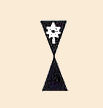
 25th Army Tank Brigade
25th Army Tank Brigade
The small white maple leaf within the diabolo was to commemorate the Brigade's association with the 1st Canadian Division, it was added to the black diabolo in Italy in May 1944. This Brigade has a complex history, on 3 September 1939 it was a Second Line Army Tank Brigade embodied in the UK, then on 28 May 1940 it was redesignated and reorganised as 2nd Motor Machine Gun Brigade only to revert to 25th Army Tank Brigade on 10 December 1940. On 1 June 1942 it was redesignated 25th Tank Brigade and finally, on 5 January 1945, Brigade HQ was redesignated HQ 25th Armoured Assault Brigade Royal Engineers (see above).
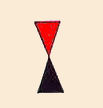 36th Army Tank Brigade
36th Army Tank Brigade
Headquarters formed on 1 December 1941 by conversion and redesignation of H.Q. 205th Independent Infantry Brigade (Home). Redesignated as 34th Tank Brigade on 12 August 1942, it was disbanded in the UK on 31 July 1943.
 1st Infantry Brigade (Guards)
1st Infantry Brigade (Guards)
The 1st and 24th Independent Brigade Groups and the 32nd and 33rd Independent Brigades all wore the formation colours of the Household Brigade: blue and red.
 24th Independent Infantry Brigade (Guards)
24th Independent Infantry Brigade (Guards)
 29th Independent Brigade Group
29th Independent Brigade Group
At the start of the war this was a Regular Infantry Brigade with the title 'The Cairo Brigade' and was redesignated the 29th Infantry Brigade. Then on 3 October 1939 it bacame the 22nd Infantry Brigade and on 14 July 1940 it became an Independent Brigade Group. On 15 June 1944 it was redesignated as 29th Brigade Group.
 31st Independent Brigade Group
31st Independent Brigade Group
Formed on 17 July 1940 as a Group, on 10 December 1941 it was redesignated and organised as 1st Airlanding Brigade Group and on 10 March 1943 redesignated as 1st Airlanding Brigade.
 32nd Independent Infantry Brigade (Guards)
32nd Independent Infantry Brigade (Guards)
 33rd Independent Infantry Brigade (Guards)
33rd Independent Infantry Brigade (Guards)
 36th Independent Infantry Brigade
36th Independent Infantry Brigade
It was designated the 36th Independent Infantry Brigade on 28 June 1940, but reverted to 36th Infantry Brigade on 22 June 1942.
 37th Independent Infantry Brigade
37th Independent Infantry Brigade
The clock stands at 0307 Hrs (for 37), the diamond background symbolises the brigade's service with 12th (Eastern) Infantry Division with the BEF. It was an independent infantry brigade from 9 July 1940 to 8 December 1941, when it was redesignated 7th Infantry Brigade.
 56th Infantry Brigade
56th Infantry Brigade
This brigade was an Army Group formation until 20 August 1944 when it became an integral part of 49 Infantry Division.
 61st Infantry Brigade
61st Infantry Brigade
Formed in Italy on 21 May 1944 as 'M' Brigade with Motor Battalions, it was designated 61st Infantry Brigade on 29 May 1944, then on 20 March 1945 it was redesignated 61st Lorried Infantry Brigade, the Motor Battalions being reorganised as Infantry Battalions.
 70th Independent Infantry Brigade
70th Independent Infantry Brigade
This brigade ceased to be independent on 16 September 1940, it was disbanded on 19 October 1944.
 71st Independent Infantry Brigade
71st Independent Infantry Brigade
Initially the 3rd London Infantry Brigade, on 28 November 1940 its headquarters were redesignated Headquarters 71st Infantry Brigade, then on 12 December 1940 it was redesignated 71st Independent Infantry Brigade. The brigade ceased to be independent on 14 June 1942.
 72nd Independent Infantry Brigade
72nd Independent Infantry Brigade
 73rd Independent Infantry Brigade
73rd Independent Infantry Brigade
 115th Infantry Brigade
115th Infantry Brigade
 116th Infantry Brigade Royal Marines
116th Infantry Brigade Royal Marines
 133rd Infantry Brigade
133rd Infantry Brigade
Initially an infantry brigade it became a Lorried Infantry brigade in October 1942, it was disbanded in the Middle Eastt on 16 January 1943.
 148th Infantry Brigade
148th Infantry Brigade
This brigade was redesignated and reorganised as an Indepenent Brigade Group on 14 November 1940, then on 25 July 1942 it was redesignated and reorganised as a Training Brigade for the pre-OCU training of all OCTU Candidates for all arms in the army in the UK except RAC, AA, and Pay Corps.
 204th Independent Infantry Brigade
204th Independent Infantry Brigade
 206th Independent Infantry Brigade
206th Independent Infantry Brigade
 210th Independent Infantry Brigade
210th Independent Infantry Brigade
The Irish shamrock. Formed for service in the UK by No. 10 Infantry Training unit, on 1 December 1941 it was redesignated 210th Independent Infantry Brigade. Then on 13 January 1942 it was redesignated 38th (Irish) Infantry Brigade.
 212th Independent Infantry Brigade
212th Independent Infantry Brigade
The tulip refers to the tulip fields of Lincolnshire, the brigade having served in Lincoln County Division from 27 March to 20 Novemeber 1941.
 214th Independent Infantry Brigade
214th Independent Infantry Brigade
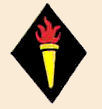 218th Independent Infantry Brigade
218th Independent Infantry Brigade
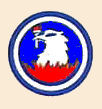 219th Independent Infantry Brigade
219th Independent Infantry Brigade
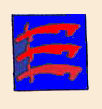 223rd Independent Infantry Brigade
223rd Independent Infantry Brigade
The three Seaxes from the Arms of the County of Essex. It has been suggested by some writers, that the weapons were chosen as a pun on the name of the County, which was called 'Eastseaxe' in the Anglo-Saxon Chronicle. The brigade converted to 3rd Parachute Brigade on 7 November 1942.
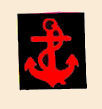 227th Independent Infantry Brigade
227th Independent Infantry Brigade
Redesignated as 227th Infantry Brigade on 14 July 1943.
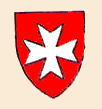 231st Independent Infantry Brigade
231st Independent Infantry Brigade
In September 1939 this was a Regular Infantry Brigade known as the Malta Infantry Brigade (hence the Maltese Cross emblem), then on 7 August 1940 it was redesignated Southern Infantry Brigade and on 14 July 1942, the 1st (Malta) Infantry Brigade, and on 1 April 1943 finally designated 231st Infantry Brigade.
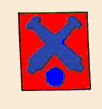 301st Infantry Brigade
301st Infantry Brigade
This brigade was formed on 15 January 1945 from artillery units, hence the Royal Artilley colours of blue and red and the crossed guns.
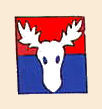 303rd Independent Brigade
303rd Independent Brigade
This brigade HQ was formed from the Headquarters of the 27th Anti-Aircraft Brigade, hence the RA blue and red background, the White Hart's head was taken from the Arms of the Borough of Eastbourne.
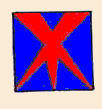 304th Independent Infantry Brigade.
304th Independent Infantry Brigade.
The red beams on a blue background symbolise searchlights. This infantry brigade was formed on 22 January 1945 from the 38th Anti-Aircraft Brigade.
 Jewish Infantry Brigade Group
Jewish Infantry Brigade Group
The symbol is the Magen David, the Shield of David. Formed in Egypt on 28 September 1944, the brigade began to function on 6 October 1944.
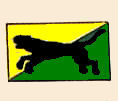 Recce, 4th Div
Recce, 4th Div
 H.Q. Pack Transportation Group, C.M.F.
H.Q. Pack Transportation Group, C.M.F.
 Combined Operations HQ
Combined Operations HQ
The badge incorporates emblems of the three Services, a naval anchor, a tommy-gun, and the RAF albatross.
 HQ Special Service Brigade
HQ Special Service Brigade
The daggers were in silver.
 Commando Brigades
Commando Brigades
 Commando Signals
Commando Signals
Letters and emblem in silver on black.
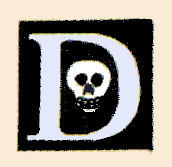 Commando Depot
Commando Depot
 No. 1 Commando
No. 1 Commando
 5 Troop
5 Troop
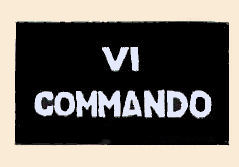 No. 6 Commando
No. 6 Commando
Silver on black.
 101 Troop of No. 6 Commando.
101 Troop of No. 6 Commando.
 Special Boat Services
Special Boat Services
This badge was unique in that it was made in metal and enamelled.
 "V" Force
"V" Force
Also woven on dark green felt or woven on kahki. This force came into being during the withdrawl from Burma and was made up of local dispersed troops; in the early days mainly Kachins. In 1943-44 it operated in no-mans land on the right flank of the Tiddim Road in the almost impenetrable hills around Haka and Falam. When operations recommenced in 1944, V Force operated in advance of the Lushai Brigade in the hill country between Manipur State and Arkan.
The separate badges of the three Anti-Aircaft Corps and the twelve Anti-Aircraft Divisions were withdrwawn in 1943, when all A.A. formations adopted the Anti-Aircraft Command badge.
There were also nine county infantry divisions (they appear as ten below, but West Sussex County Division and Essex County Division was the same division renamed), all were static formations established for the defence of the United Kingdom, commanding independent infantry brigades stationed on the coast. They had no basic divisional troops, all being on loan from other formations. The nine were:
Devon and Cornwall County Division: Headquarters formed on 28 February 1941 from personnel of South-West Area H.Q. in Southern Command. The Division became the 77th Infantry Division on 1 December 1941.
Dorset County Division: Divisional H.Q. formed on 24 February 1941 but did not assume command of Infantry Brigades until 24 April. Divisional H.Q. was disbanded on 31 December 1941.
Durham and North Riding County Division: Divisional H.Q. was formed on 12 March 1941. It was redesignated Durham and North Riding Coastal Area on 1 December 1941.
Essex County Division: formed on 18 February 1941 by redesignation of West Sussex County Division but was disbanded on 7 October 1941.
Hampshire County Division: formed on 28 February 1941 by redesignation of Hampshire Area. This Division ceased to function on 25 November 1941 and was disbanded on 31 December 1941.
Lincolnshire County Division: divisional H.Q, was formed on 24 February 1941 but did not become operational until 25 November 1941. Divisional H.Q. was disbanded on 3 December 1941.
Norfolk County Division: formed on 24 December 1940 it was redesignated 76th Infantry Division on 18 November 1941.
Northumberland County Division: Divisional H.Q. was formed on 24 February 1941. This Division ceased to function on 1 December 1941 and Divisional H.Q. was disbanded on 21 December.
West Sussex County Division: formed on 9 November 1940 by redesignation of Brocforce, this division was redesignated as Essex County Division on 18 February 1941.
Yorkshire County Division: Divisional H.Q. was formed on 24 February 1941 becoming operative on 19 March but redesignated as East Riding District on 1 December 1941.
Sources and Links
Heraldry in War - Formation Badges 1939-1945 by H.N. Cole (Revised and enlarged edition, Wellington Press, 1947)
Additional information from Stuart Wheeler, Assistant Librarian, the Tank Museum, Bovington (particularly on Armoured and Tank Brigades); Rich Payne and Owen D at World War II Talk, and from Tom Canning on the derivation of 15th Army's flash.
British Decorations and Campaign ribbons
If you did not arrive at this page from my Home Page you may access it here.
Air Defence of Great Britain (ADGB)

Anti-Aircraft Corps
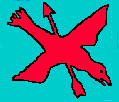 1 Anti-Aircraft Corps
1 Anti-Aircraft Corps
1 A-A Corps covered the South of England.
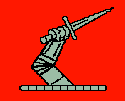 2 Anti-Aircraft Corps
2 Anti-Aircraft Corps
2 A.A. Corps covered the Midlands and North of England.
 3 Anti-Aircraft Corps
3 Anti-Aircraft Corps
Three Cs for Three Corps. This Corps covered Scotland.
Anti-Aircraft Divisions
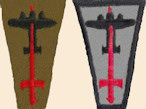 1st Anti-Aircraft Division
1st Anti-Aircraft Division
The sword was taken from the arms of the City of London. This was the first Anti-Aircraft Division and was raised in 1935, composed originally of Territorials from London and the Home Counties; in 1938 it became a purely London Territorial formation. An earlier pattern of this badge had a kahki background. Many surviving examples seem to have faded to grey.
 2nd Anti-Aircraft Division
2nd Anti-Aircraft Division
The badge was chosen from the Division's motto We sweep the skies. The badge was usually embroidered, but there were also printed versions. This was the second anti-aircraft formation to be raised and was formed in 1936. It was composed of Territorial Army A.A. units located in the Midlands and North of England.
 3rd Anti-Aircraft Division
3rd Anti-Aircraft Division
The Scottish Thistle, the emblem of Scotland. A pre-war Territorial Army Anti-Aircraft formation located in Scotland.

 4th Anti-Aircraft Division
4th Anti-Aircraft Division
The buckles of this formation badge were one of the heraldic charges in the Commander's coat of arms. The first design is on the left. This Division was a Territorial Army Anti-Aircraft formation, located in the North-Western Counties.
 5th Anti-Aircraft Division
5th Anti-Aircraft Division
The badge was a falling bomber with five flames. 5th Division was raised in 1938 and was composed of T.A. A.A. Brigades R.A., and A.A. Battalions R.E. drawn from the Home Counties, the South and West of England, with a few units from the County of London. Divisonal Headquarters were at Reading.
 6th Anti-Aircraft Division
6th Anti-Aircraft Division
The Division's operational area covered the Thames Estuary, Essex, and North Kent.
 7th Anti-Aircraft Division
7th Anti-Aircraft Division
The sword and scales of the seventh sign of the Zodiac. 7th A.A. Division HQ was located at Gosforth, Newcastle-upon-Tyne, and the Division covered the North-Eastern Counties.
 8th Anti-Aircraft Division
8th Anti-Aircraft Division
The red eight-pointed star, indicating a shell burst, for the 8th A.A. Division. This Division was located in South Wales and the West of England.
 9th Anti-Aircraft Division
9th Anti-Aircraft Division
The tail of the Black Cat formed the figure 9.
 10th Anti-Aircraft Division
10th Anti-Aircraft Division
This A.A. Division was located in Yorkshire.
 11th Anti-Aircraft Division
11th Anti-Aircraft Division
An arrow piercing a parody of the German Eagle. This formation manned the defences of the West and Central Midlands.
 12th Anti-Aircraft Division
12th Anti-Aircraft Division
The Double-Six for twelve. 12th A.A. Division covered the South-West of Scotland, including the Clyde Estuary, and Northern Ireland.
Vehicle Arm of Service Markings
 Headquarters of Formations
Headquarters of Formations
 Headquarters Royal Artillery and R.A. Units
Headquarters Royal Artillery and R.A. Units
 Headquarters Royal Engineers and R.E. Units
Headquarters Royal Engineers and R.E. Units
 Headquarters Royal Signals and Royal Sigs. Units
Headquarters Royal Signals and Royal Sigs. Units
 Royal Armoured Corps Reconnaissance Regiments
Royal Armoured Corps Reconnaissance Regiments
 Lorried Infantry Battalions
Lorried Infantry Battalions
 Headquarters R.A.S.C. and R.A.S.C. Units
Headquarters R.A.S.C. and R.A.S.C. Units
 Headquarters R.A.O.C. and R.A.O.C. Units
Headquarters R.A.O.C. and R.A.O.C. Units
 Headquarters R.E.M.E. and R.E.M.E. Units
Headquarters R.E.M.E. and R.E.M.E. Units
Version 10.02 Revised 5 May 2007.
British Formations and Units by Hans Houterman & Jeroen Koppes. There is much detailed information here on individual formations.
World Army Badges & Insignia since 1939 by Guido Rusignoli (Blandford Press, 1983)
Orders of Battle - Second World War 1939-1945 by H.F. Joslen (Naval & Military Press reprint, 1990)
British Army Handbook 1939-1945 by George Forty (Sutton Publishing, 1998)